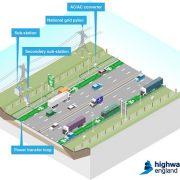Nissan Brings Us Self-Driving……Chairs?
Jennifer van der Kleut
Japan may not have self-driving cars loose on public roads yet-but they at least have self-driving chairs.
Yes, we said chairs! In a new video uploaded to YouTube, Nissan shows off its latest creation-office chairs that reset themselves to their original position, tucked into a table or desk, at just the clap of your hands.
Nissan’s fancy, autonomous “smart chairs” can reset themselves either with or without a human sitting in them.
In a press release, Nissan explains the new technology behind the chairs, which they say was inspired by self-parking technology they are already working on in cars.
The system appears to function with sensors on each chair that pair up with wireless cameras placed on the room’s ceiling.
“The ‘Intelligent Parking Chair’ is a unique chair that automatically moves to a set position,” Nissan’s press release states. “The chair includes a roller to automatically move 360 degrees, paired with a system that indicates the target position. Four cameras placed on the room’s ceiling generate a bird’s-eye view to wirelessly transmit the chair’s position and its route to destination.”
When the chairs are empty, someone can clap their hands and all the chairs in the room will automatically guide themselves back into position at the table, as Nissan’s video illustrates.
When someone is in the chair, he or she appears to be able to use controls, similar to those on an electric wheelchair, to guide themself back into position at the table.
Though they call the self-parking chairs a “novelty,” Tech Times said, “It’s proof that autonomous vehicle technology has implications far beyond the automotive field.”
Tech Times points out that the smart chair technology could prove particularly valuable for large rooms like auditoriums and cafeterias.
See Toyota’s self-parking smart chairs in action in their YouTube video:

